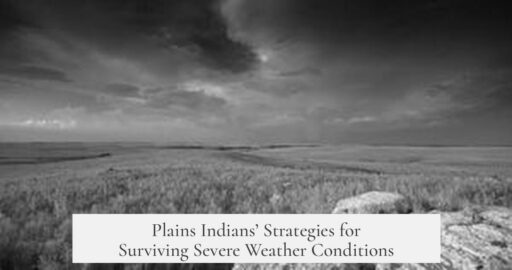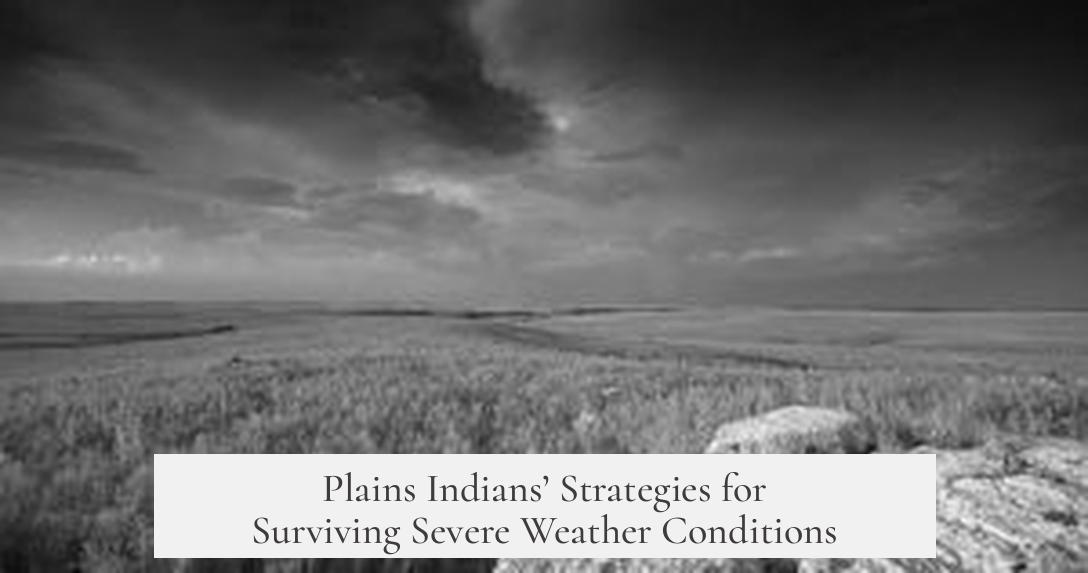The Plains Indians managed severe weather through sophisticated adaptations in their dwelling design, strategic camp location, and deep understanding of weather patterns. Their primary shelter, the tipi, offered remarkable resilience against heat, cold, wind, and precipitation. However, their response to extreme events like tornadoes relied on dispersal and early observation rather than structural defense. Seasonal camp placement further enhanced survival prospects during harsh winters.
The tipi stands as a centerpiece in how Plains Indians coped with their environment. This structure consisted of a timber frame made from six to eight poles, covered by tanned buffalo hides sewn together. The design was far from rigid; instead, it incorporated flexibility to resist the frequent high winds of the Great Plains. Its oval rather than circular shape allowed wind to flow around it smoothly without exerting excessive pressure on the frame.
Temperature extremes transformed how the tipi was used. In summer, the outer buffalo hide cover could be rolled up around the bottom edges like a skirt. This technique increased ventilation, allowing hot air to escape and cooler breezes to enter. In contrast, winter called for insulating measures. Inside the tipi, an inner lining was hung around the poles. Between this lining and the outer cover, the inhabitants stuffed grass or animal fur to trap warmth better. An always-burning fire in the central hearth heated the space, creating a reliably cozy environment even during the dead of winter on the icy plains.
Rain and snow proved manageable due to the tipi’s pole arrangement. The poles converged at the top center above a smoke hole, where most precipitation collected before sliding down the poles. Rainwater dispersed at the tipi’s edges without wetting the interior. Any moisture that passed inside usually evaporated quickly due to the hearth’s heat, keeping the inside dry during storms.
Tornadoes presented a challenge tipis alone could not solve. These temporary structures lacked the strength to withstand the violent rotation and uplift tornadoes produce. Nonetheless, low population density among Plains tribes reduced the risk of tornado encounters. Their homes were spaced far apart compared to urban areas, making direct hits less frequent.
Plains Indians also demonstrated acute weather awareness. Tribal members observed cloud formations, wind behavior, and temperature shifts, allowing them to anticipate severe storms. When supercell thunderstorms developed, some groups might have sought simpler protective measures like seeking low ground or ditches. Although specific historical accounts of such weather responses are sparse, this cautious behavior aligns with general indigenous knowledge systems emphasizing harmony with nature.
Winter survival involved not only tipi modification but also careful relocation decisions. In late fall, tribes on northern prairies moved from exposed plains to more protected areas. These included the “parklands” at the prairie edges, foothills featuring sheltered valleys called coulees, and forested river valleys with greater availability of water and firewood. Such locations offered natural windbreaks that shielded camps from bitter winter gales.
These winter camp sites ensured access to essential resources as well. Buffalo herds, a primary food source, often migrated alongside the tribes into these sheltered zones. Choosing sites near these herds reduced hunting distances and eased winter sustenance. Also, the proximity of wood for fuel helped maintain warmth through continuous fires. Semi-permanent winter settlements typically lasted months, allowing peaceful subsistence interrupted minimally by weather extremes.
| Severe Weather Aspect | Plains Indians Adaptation |
|---|---|
| Heat (Summer) | Raise tipi cover edges for air flow |
| Cold (Winter) | Inner lining, insulated layers, constant fire |
| Wind | Flexible oval tipi structure facing wind |
| Rain/Snow | Pole convergence directs water away, fire evaporates dampness |
| Tornadoes | Low population density, seek natural shelter, ditch use (speculative) |
| Winter Location | Move to sheltered valleys, parklands with resources |
These combined strategies highlight an integrated approach toward surviving severe weather. Rather than relying on one solution, Plains Indians used their knowledge of natural materials, structural design, seasonal animal behavior, and terrain to build resilience.
- Tipis featured adjustable designs for ventilation and insulation.
- Flexible construction and shape minimized wind damage.
- Precipitation management relied on pole arrangement and hearth heat.
- Tornado protection depended on population spread and weather observation.
- Winter camps relocated to natural windbreaks with resource access.
How did the Plains Indians handle severe weather?
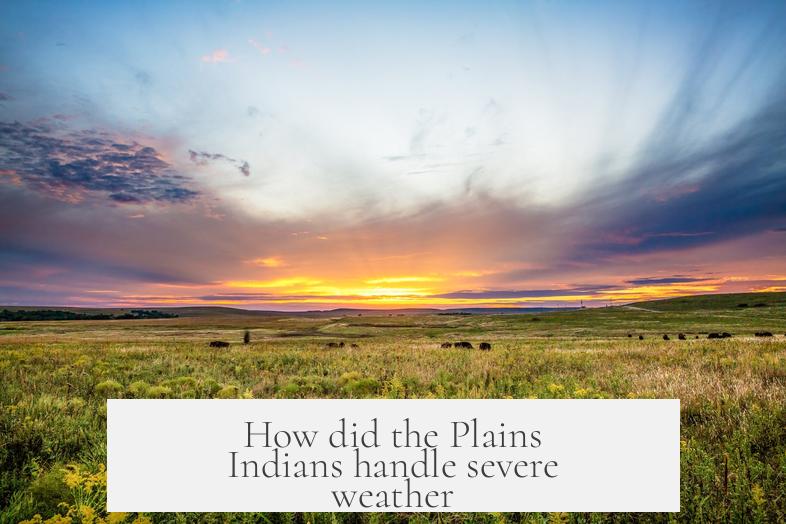
The Plains Indians mastered the art of adapting to brutal weather on the Great Plains using smart shelter design, strategic camp placement, and keen weather awareness. Their solutions show a deep understanding of the environment and a creative approach that allowed them to thrive under often unforgiving conditions.
Imagine battling wild winds, freezing winters, scorching summers, and sudden storms with nothing but a tent and your wits. The Plains Indians did this every day. How? Let’s dive into the details.
Tipi Structure: Ingenious, Practical, Weather-Resistant
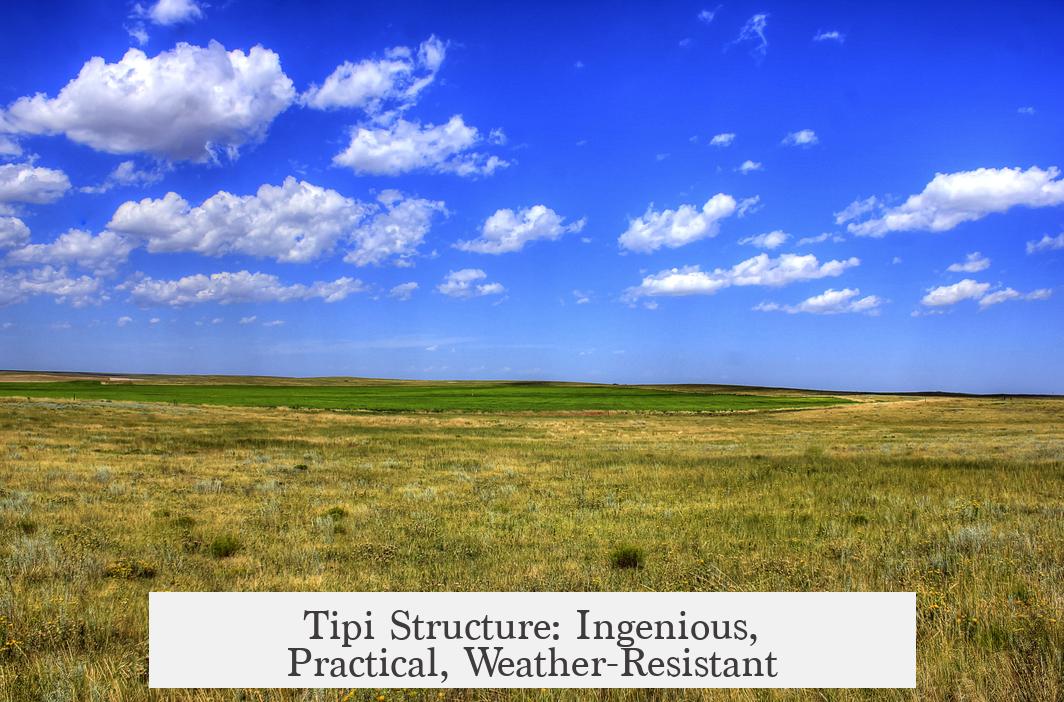
The tipi wasn’t just a pop-up tent — it was a carefully engineered marvel. Made from roughly six to eight timber poles arranged into a sturdy frame, it was covered with tanned buffalo hides sewn into a seamless outer shell. This wasn’t just skin stretched over sticks; it was architecture designed for survival.
- Summer Ventilation: When the plains heated up mercilessly, they would pull the tipi cover up like a skirt. This clever move created a cooling breeze that kept the interior livable, even during the hottest days.
- Winter Warmth: The real magic, though, happened in winter. An inner lining would be hung inside, creating a double-wall effect. The gap between this lining and the outer skin got stuffed with grass or fur. Add a fire burning in the hearth, and you get a surprisingly cozy, warm space in the middle of brutal prairie winters. Not just a tent, it was a warm cocoon.
- Wind Resistance: Unlike rigid wooden houses, the tipi’s frame had “give.” Its oval shape, not a perfect circle, was oriented to let the wind slip around the sides rather than push directly against it. This flexibility helped it stand firm in fierce winds common on the plains.
- Rain and Snow Handling: Most rain never reached inside. The poles converged right over the smoke hole at the top, catching precipitation. Raindrops slid harmlessly down the poles and fell outside the tipi’s edge. The heat from the fire even evaporated small dribbles that sneaked through the top. Ingenious and practical!
It’s like they had front-row seats to Mother Nature’s tantrums — and a clever way to defuse them.
Facing Tornadoes: When Nature Shows Its Wild Side

Now, one storm the tipi wasn’t built to handle: the tornado. No structure, ancient or modern, fares well against tornado-force winds. So how did the Plains Indians cope?
- Population Spread: Sparsely populated camps reduced the chance of a disastrous tornado strike. They simply weren’t clustered densely like today’s towns where destruction is amplified by concentration.
- Weather Awareness: The tribes had a profound sense of weather patterns. They watched the skies closely and likely recognized signs of brewing supercell storms. When danger loomed, people could seek shelter in ditches or depressions. There’s some educated speculation here, but it’s reasonable to think they had methods to reduce risk from these sudden, violent storms.
So while a tornado was terrifying, the Plains Indians combined low risk with weather smarts to stay safe.
The Art of Winter Camping: Locating Safety and Resources

The tipi was only half the story. Where you camp was just as vital.
- Seasonal Moves: As fall waned and temperatures dropped, tribes didn’t wait for winter to strike where they stood. They moved into sheltered areas — parklands, foothills, and forested river valleys — where nature offered protection.
- Benefits of Shelter: These spots, with coulees and tree cover, blocked harsh winds. They also had steady water sources and plenty of wood for fires. Setting up a semi-permanent camp here during winter boosted survival chances enormously.
- Hunting and Food: Buffalo herds migrated along with the people, moving from open plains into these protective zones too. Choosing winter camps near buffalo meant steady access to food. No need for a hunger crisis when nature and strategy align.
Choosing where to live beats choosing what to wear — even the best tipi can’t help if you camp in an exposed field during a blizzard.
Practical Wisdom From the Plains: Lessons for Today’s Weather Warriors
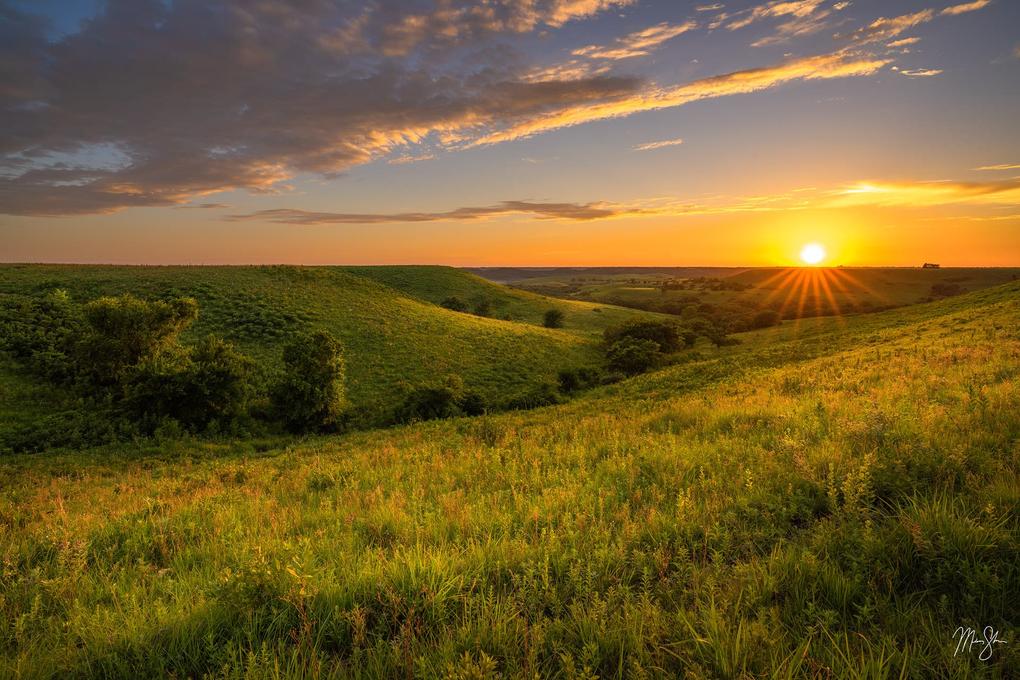
The innovations of Plains Indians offer lessons for anyone battling severe weather today.
- Flexible design matters. Your shelter should breathe in summer and trap warmth in winter. The tipi’s adjustable flaps and insulating lining show how to handle this elegantly.
- Orientation is key. Facing your shelter to minimize wind pressure isn’t just ancient wisdom; it’s practical physics. Modern homebuilders ignore this at their peril.
- Siting beats everything. Where you put your home matters more than many realize. Sheltered spots offer natural defenses against storms and cold.
- Respect natural warning signs. The Plains Indians’ deep connection to weather is a reminder that observation and timing can save lives, even if you can’t outrun a tornado.
Next time you think about primitive living, remember the Plains Indians’ tipis weren’t just tents—they were a weather defense system honed over generations.
How would you design a shelter for extreme weather if you had to? Would you borrow from the Plains Indians’ playbook?
“The tipi is a living, breathing structure. Its adaptability is its strength — a gentle nod to the unforgiving Great Plains.”
From summer ventilation to winter insulation, from wind resistance to camp relocation, their approach remains a shining example of human resilience where nature gives no quarter.
